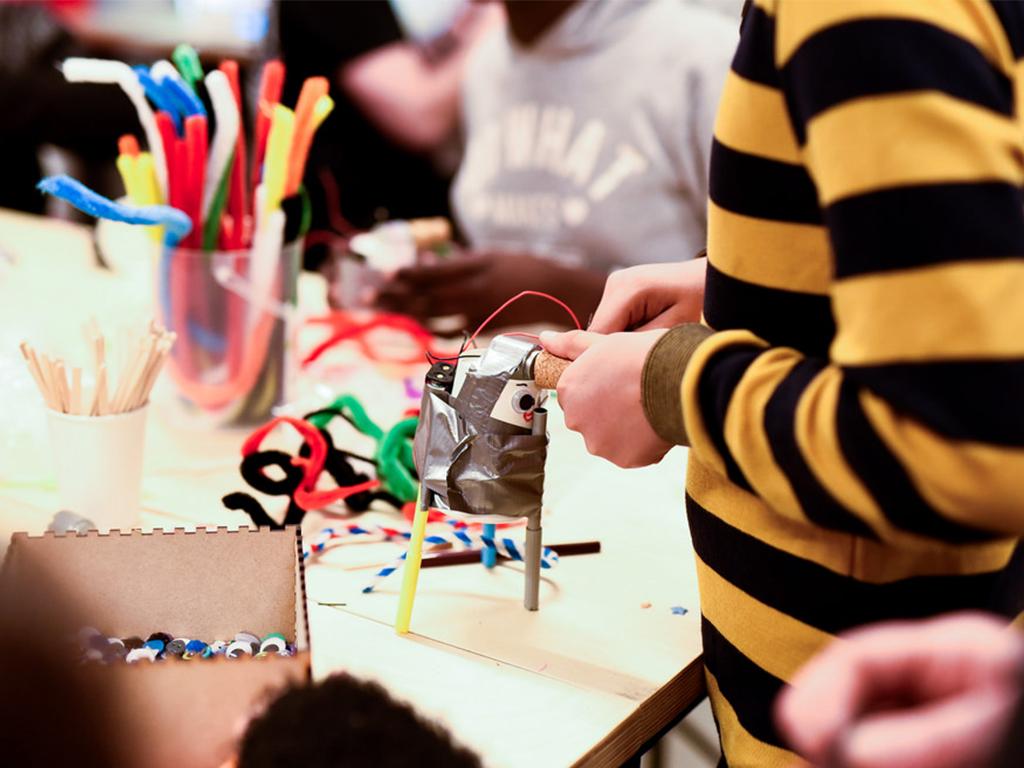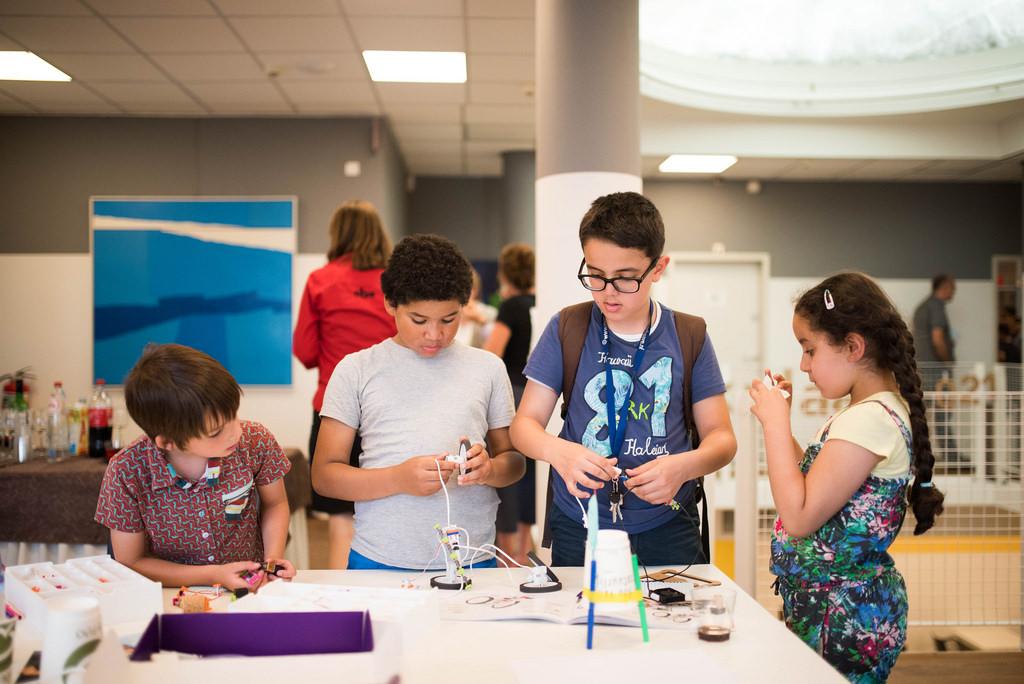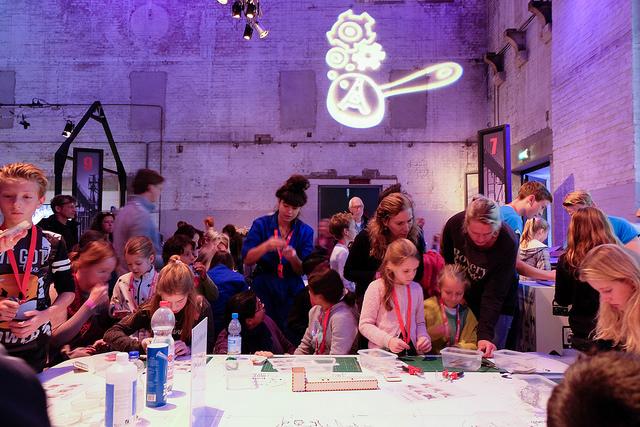From April 18th to 21st Karien Vermeulen and I were invited to Vejle and Aarhus in Denmark to learn more about the maker education initiatives there and to attend the Fablearn conference. At the conference we hosted a workshop on our educational programme ‘Who is the boss of the Internet?’ and presented our collaboration with the Amsterdam Public Library to develop 10 maker spaces ('Maakplaatsen'). It was a hugely inspiring week. We met many teachers, visited schools and were introduced into the Danish model of collaboration to foster maker initiatives. Food for thought on what to do in The Netherlands. In this blog I will share a few of our experiences.
Structural collaboration, scaling up: FabLab@School
In Vejle, a municipality of about 110.000 residents, the municipality has worked together with schools to set up about 40 Fablabs in schools. Here, students work together with their teachers on creative and technical challenges in their own Fablab. Kids from about 12 years and older spend two hours a week in this space to work on their assignments. During our visit to one of the schools, they were preparing picture frames for their parents to give after their communion. Vejle is one of three municipalities in the region that has this setup. In Silkeborg and Aarhus there is also a strong collaboration between consultants at the municipality and schools to integrate maker education in the curriculum. The University of Aarhus is involved to provide teachers with tools and techniques to use the FabLab, and simultaneously research how children learn when they encounter digital fabrication and coding in a school setting.
A way to make learning visible and shareable: The Failure Tree
Every FabLab we visited had a specific place to display ‘failures’. Something that went wrong, collapsed, wasn’t pretty enough or just a prototype that wasn’t quite right yet. Everything is hung in a tree, placed on a prominent shelve or given another visible spot in the FabLab. Teachers use it to make the iterations of their students visible and help others prevent making the same ‘mistakes’. One teacher even told us that the younger students (who don’t work in the FabLab yet) visit the FabLab to hang their failed projects in the tree. We met one masters student who was researching how these objects of failure can play a (more) meaningful role in the learning and design process. The message: there is no such thing as failing in a design process, you always learn something new and you can use the ‘failed’ object to help others.
Being critical of technology: Who is the boss on the Internet?
During the FabLearn conference many teachers who are involved in one of the three municipalities came together to meet keynote speakers Paolo Blikstein (professor at Stanford) and Sylvia Martinez (author of Invent to Learn), and to attend workshops that will help them further in their FabLabs. We hosted a workshop on ‘Who is the boss on the Internet?’.
In two hours we recreated the web using sponges and straws, and we learnt about how data travels the web in a worldwide network. Using Easter eggs we recreated how encryption works online. For us this was a test, our educational program is still being tested with children as we speak. We looked forward to hearing from these teachers how they felt about the different challenges we gave them. And for them, we quickly learned, it was a new way of fostering a critical conversation about the technology we use. Maker education is a very active and hands on way to motivate children to take a critical stance towards our technical tools, but this needs to be actively promoted by teachers and the types of assignments they give their students. We were happy to learn that ‘Who is the boss on the Internet’ can possibly play a role in that ambition.
For everyone who wants to do our workshop in their classroom, you can download a pdf here.



